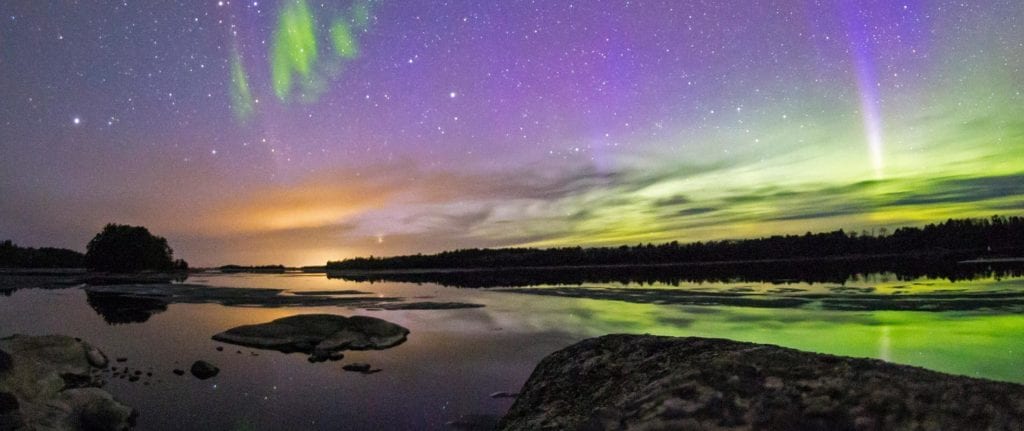The U.S. National Park System (NPS) has, in the past, received such praise as “the best idea the United States has ever had”. The national parks system protects some 84.6 million acres of pristine nature, which equates to about 3.5 percent of the entire landmass of the U.S. In total, 60 locations (one of which was founded this year in February) can officially call themselves national parks.
In recent months, the NPS released the visitation statistics for the year 2017 and, perhaps unsurprisingly, legends of the American outdoors like Zion, the Grand Canyon, Yellowstone, and Yosemite ranked at, or near to, the top of the list, each with millions of guests. On the other hand, 22 of the 59 parks had fewer than 500,000 visitors. With the help of the travel enthusiasts at AllTheRooms, we’ve arranged a list of our favorite of those 22, each of which proves that low numbers of travelers is not for a lack of beauty.
Gates of the Arctic National Park | Alaska
Officially the least-visited national park in the United States system, only just over 11,000 people were welcomed to Gates of the Arctic National Park last year. Ironically, the park is also the second largest, with nearly 8.5 million acres of land, and is the most northern park, being entirely north of the Alaskan Arctic Circle. While difficult to reach and cold throughout the year, the Itkillik River drainage in the Brooks Range is some of the most striking landscape in the country.
Pinnacles National Park | California
Until the foundation of the tiny Gateway Arch National Park in 2018, Pinnacles was the baby of the NPS family. Having just turned five years old, its youth is a big contributor to its small crowds. Tourists should begin to arrive rapidly as the park is only 80 miles away from our country’s 10th most populated city, San Jose.
Redwood National Park | California
Tied with Alaska for the most national parks, California has some heavy hitters like Yosemite, Joshua Tree, and Sequoia, but somehow Redwood often gets overlooked. Tucked away in the northern reaches of the state—almost 400 miles north of San Francisco—Redwood’s isolation contributes heavily to its beauty. The majority of the park is a quiet rainforest where redwoods, the world’s largest trees, loom over visitors from the mists of their groves.
Great Sand Dunes National Park | Colorado
This Southern Colorado park protects some of the tallest sand dunes in the entire world, with some reaching up to 750 feet high. The juxtaposition of sand dunes against a mountainous backdrop is a particularly special view and adrenaline-junkies enjoy surfing or sledding down them. Of the parks with under 500,000 visitors, Great Sand Dunes is the closest to surpassing that number and has seen visitations increase 25% in the last year.
Voyageurs National Park | Minnesota
Named for the French-Canadian fur traders that used to frequent the area, Voyageurs is situated on Minnesota’s border with Canada. Populated by numerous lakes and waterways, the area is incredibly popular with kayakers, fishermen, and boaters. Although the temperatures drop dramatically in the winter, the park offers great trails for snowshoeing and snowmobiling.
Kenai Fjords National Park | Alaska
Also in Alaska, Kenai is definitely easier to get to than Gates of the Arctic since it is on the southern coast near Seward. Of the parks listed in this article, Kenai may be the best for animal-lovers hoping to get an up-close look at a variety of fauna. The park is famous for pictures of gatherings of grizzlies waiting atop waterfalls for salmon to jump into their gaping mouths. Besides the bears, the coastal areas of the park are teaming with humpback and killer whales, as well as sea otters. Meanwhile, further inland, it is common to see moose, wolves, and mountain goats.
Isle Royale National Park | Michigan
Another park neighboring Canada, Isle Royale is completely surrounded by Lake Superior off the coast of Michigan. Its low number of visitors is thanks to it being the only U.S. National Park to completely close in the wintertime to protect travelers from extreme conditions. However, during the warmer months, Isle Royale’s rocky shores are accessible by daily ferries, float planes, and other ships.
Biscayne National Park | Florida
South of Miami, Biscayne is not highly trafficked mostly because the majority of the park is actually underwater. While the park does include islands, shorelines, and mangrove forests, it was founded to help preserve and protect offshore barrier reefs. The park is now a haven for a number of tropical marine species, and happily frequented by divers hoping to explore the habitats and shipwrecks that house these creatures.
Great Basin National Park | Nevada
Many people, when thinking of Nevada, either pictures the lights of Vegas or an otherwise barren hellscape where life struggles in its ever-expanding deserts. Great Basin stands in firm opposition to those stereotypes, being the home of forested mountains, picturesque lakes, and subterranean caves with fascinating rock features.
National Park of American Samoa | American Samoa
Unlike the stereotypical pine forest and alpine scenery that is common with most U.S. national parks, the National Park of American Samoa is a tropical paradise in the middle of the South Pacific. Stretched across three islands, Tutuila, Ofu, and Ta’u, the park was designated to not only protect the rainforests and turquoise waters but also the rich culture of the native Samoans.

